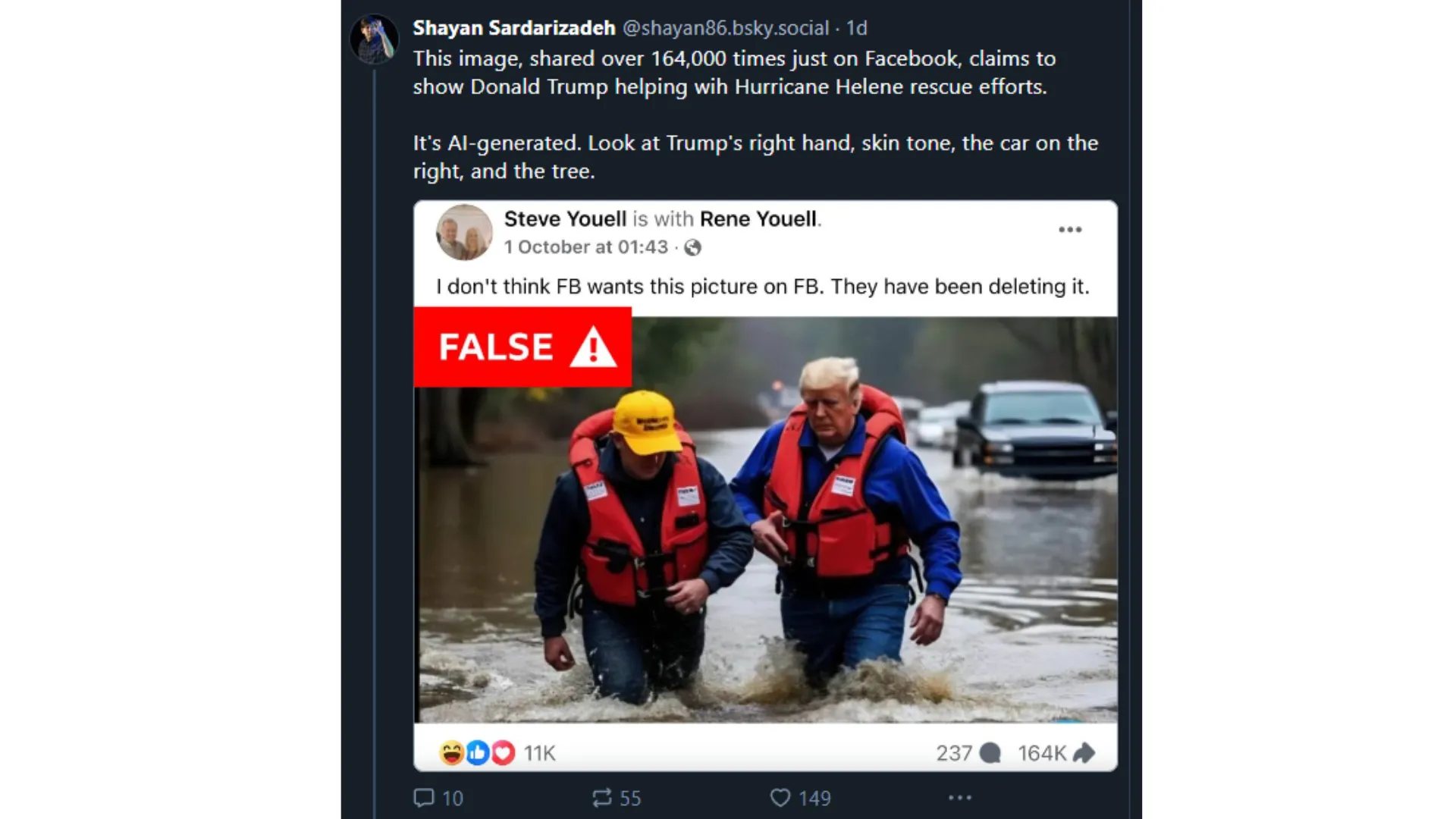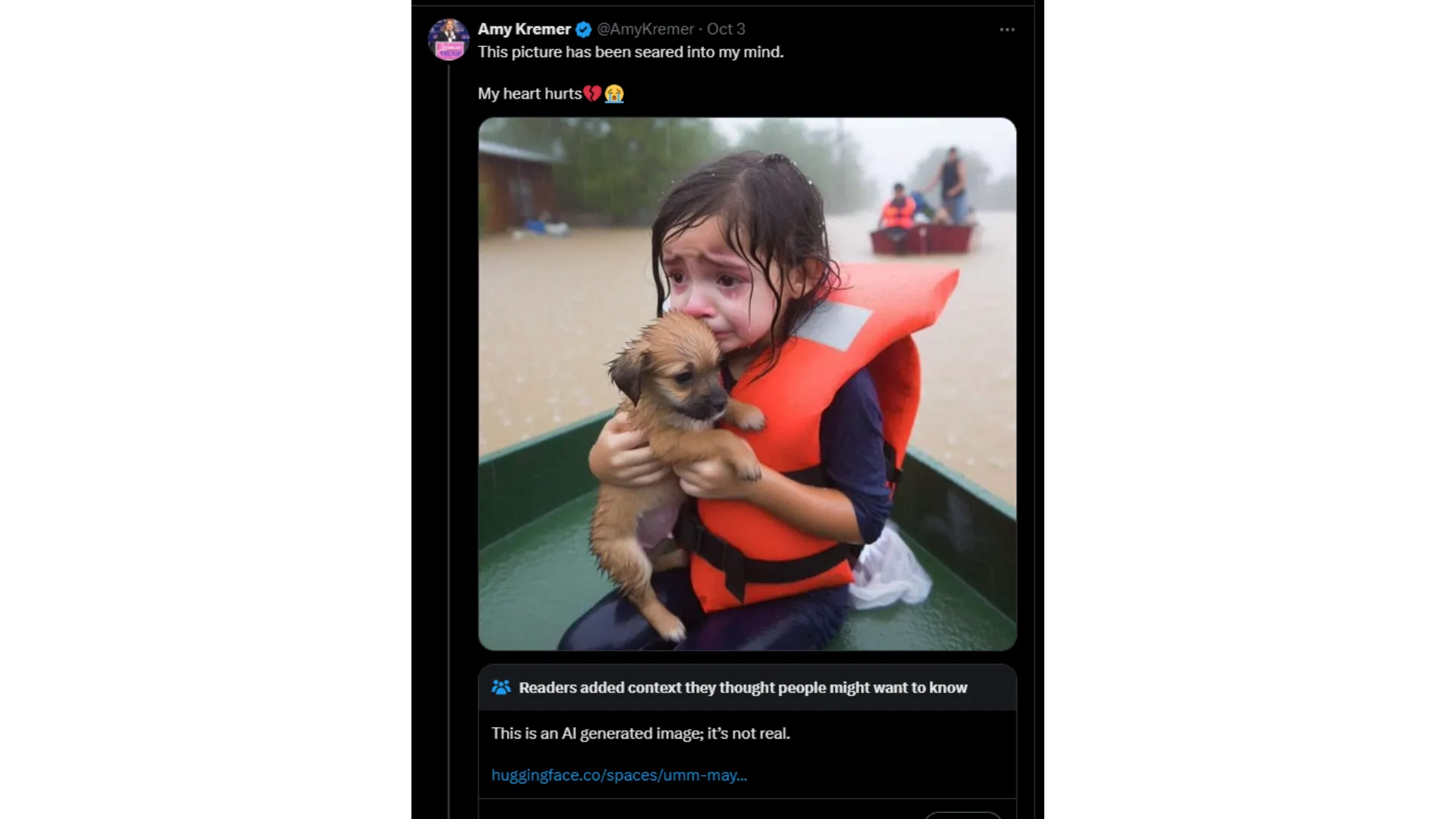In the wake of Hurricane Helene, a wave of both AI-generated and human-driven misinformation continues to flood social media, distorting the reality of the recovery efforts and creating new, unfounded fears about Hurricane Milton.
According to the nonpartisan fact-checking site Politifact, social media has become ground zero for the spread of disinformation, amplifying false narratives since Hurricane Helene made landfall last month. And now, with Hurricane Milton slamming Florida’s Gulf Coast, a new outbreak of nonsense is sweeping X and Facebook.
Conspiracy theorists, perhaps emboldened by Rep. Marjorie Taylor Green’s tweet last week that anonymous people “control the weather,” are now echoing her bizarre statement, claiming that the latest hurricane was man-made.
This is the latest example in how people are using social media to amplify lies and misinformation—often aided by AI-generated deep fakes. In one example that was shared over 164,000 times on Facebook, for instance, an AI-generated image shows Trump helping out in the Hurricane Helene flood zone. Another shows President Biden rescuing cats.
“We'll always see a level of disinformation or confusion when we're in a huge response like this. This is just the nature of the game and disaster. Obviously, this year it's through the roof,” American Red Cross Regional Communications Director Catie Ballenger told Decrypt. “So we've started a huge social media push trying to educate people and hitting it directly. We're not dancing around anything. We're calling it misinformation and giving out the correct information.”
She said the uptick in misinformation on Facebook and Twitter was especially alarming.
One AI-generated image, shared by RNC National Committee member Amy Kremer, of a little girl holding a puppy was viewed over three million times on X, formerly Twitter.
Twitter users used the “Community Notes” feature to highlight that the image was fake.
“Fake generative AI Technology has been called 'the ultimate disinformation amplifier,' a community note said. “Therefore, it is important to identify such fake images, especially when they are used by politicians.”
Ballenger said the Red Cross itself has been targeted by a misinformation, questioning whether it’s even on the scene. “There are also claims that we are misusing material donations given to the Red Cross,” she said, noting that “the Red Cross does not accept material donations, as we focus on sheltering, feeding, and mass care. We collaborate with partners who manage those donations.”
As always, the best way to combat rumors and AI-generated deepfakes is by proactively sharing accurate and timely information through official communication channels and trusted sources.
“For combating rumors, we rely on getting the correct information out through our channels and our partners channels,” a spokesperson for the City of Asheville Fire Department told Decrypt. “For the most up to date and accurate information, people should follow official channels.”
The problem has gotten so bad that the U.S. Federal Emergency Management Agency (FEMA) has published a list of rumors and lies circulating social media in an attempt to correct the misinformation.
There is one silver lining to how new information technology is being used, however. Monica Youngman, chief scientist for Science and Technology Integration at the National Oceanic and Atmospheric Administration, said that AI is being used to translate and spread facts in over five different languages about severe weather events.
“It definitely helps with that, and it helps reach communities that we haven't been able to reach before,” she told Decrypt. “There's a lot of impact to communities that their primary language is not English. So that's really what we're trying to do, is make sure they get the authoritative, trusted information as quickly as possible and as easily as possible for them to understand.”
Generally Intelligent Newsletter
A weekly AI journey narrated by Gen, a generative AI model.





